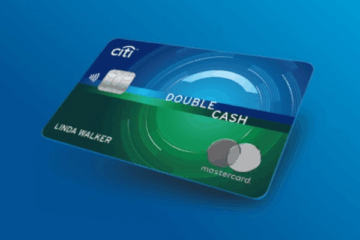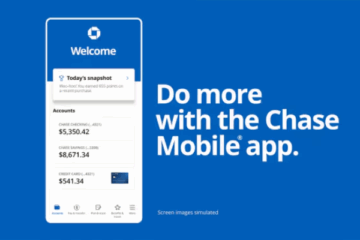Advantages of Payroll-Deducted Loans: Everything You Need to Know
Choosing the right financial product can be difficult at first, and it becomes even more daunting when we talk about the different loan options, doesn’t it? But let me introduce you to one of the most beneficial types: the payroll-deducted loan.
Advertising
This is a loan that is repaid by the employer directly from the employee’s salary. This loan stands out for its low-interest rates and for eliminating the hassle of making monthly payments, as they are done automatically.
Advertising
Stay tuned and keep reading this article as we delve into payroll-deducted loans, detailing everything you need to know, such as interest rates, terms, initiation procedures, and much more.
Interest Rates and Conditions
Credit consignado is one of the most attractive loan options due to its low interest rates. This occurs because the payments are deducted directly from the paycheck, making this type of loan a lower risk for banks and financial institutions. As a result, lenders can offer more competitive interest rates.
Advertising
In the United States, interest rates for credit consignado can vary widely based on several factors, including the financial institution, the client’s credit history, and the amount borrowed. Generally, interest rates for credit consignado range from 3% to 15% per year. This variation is due to different risk policies and market conditions applied by each institution.
Examples of Interest Rates
- Traditional Banks: Banks like Wells Fargo and Bank of America generally offer lower interest rates due to their financial stability. Rates can start around 3% to 5% per year for clients with good credit history.
- Credit Unions: Credit unions, such as Navy Federal Credit Union, often offer even more competitive rates, starting around 4% per year.
- Online Lenders: Online financial institutions, such as SoFi or LendingClub, can offer rates ranging from 6% to 15%, depending on the client’s risk profile.
Loan Conditions
The conditions for obtaining a credit consignado include the repayment term and the loan amount, which are determined based on the client’s monthly income. The repayment term generally varies from 12 to 84 months, offering flexibility for the borrower to adjust the installments to their budget.
Additionally, the approved loan amount depends on the client’s salary or monthly benefit. Banks and financial institutions calculate the amount that can be borrowed based on a percentage of the monthly income, ensuring that the client can manage the payments without excessively compromising their budget.
Important Considerations
- Credit History: A good credit history can secure lower interest rates. It is important to maintain a good credit score to take advantage of the best conditions.
- Comparison of Offers: Comparing offers from different financial institutions can help find the best interest rate and the most favorable conditions.
- Financial Planning: Before taking out a credit consignado, it is crucial to plan financially to ensure that the installments fit into the monthly budget without causing financial difficulties.
Credit consignado is an excellent option for those seeking lower interest rates and easier payment conditions. However, it is essential to carefully evaluate the offers and plan financially to ensure that this is the best choice for your financial needs.
Payroll-Deducted Credit Card

The payroll-deducted credit card is an attractive option for those seeking revolving credit with lower interest rates and greater ease of financial management. Similar to a traditional credit card, it has some significant differences that make it a beneficial choice for many people.
Benefits of the Payroll-Deducted Credit Card
The payroll-deducted credit card offers various benefits. One of the main advantages is the lower interest rates compared to conventional credit cards. This is because the minimum payment is directly deducted from the cardholder’s paycheck, reducing the risk for creditors and consequently the applied interest rates.
Lower Interest Rates: Due to the security provided by the payroll deduction, issuers of payroll-deducted credit cards can offer significantly lower interest rates than those applied to traditional credit cards. This helps cardholders save money on interest over time.
Ease of Payment: One of the main conveniences of this type of card is that the minimum payment is automatically deducted from the cardholder’s salary or monthly benefit. This not only facilitates financial management but also helps avoid late fees and penalties for missed payments.
Financial Inclusion: The payroll-deducted credit card is accessible even to those with a poor credit history. By ensuring payment through the payroll, card issuers are more willing to extend credit to individuals who might otherwise be ineligible.
The payroll-deducted credit card is a powerful financial tool for those looking for lower interest rates and an easy way to manage their payments. However, like any financial product, it is important to understand its features and use it responsibly to maximize its benefits.
Changes in Rules and Legislation
There are regular modifications to the rules and legislation governing payroll-deducted loans (crédito consignado). In the US, financial regulations are rigorous and designed to protect consumers. Recently, there have been significant adjustments that impact interest rates and contract terms.
The main changes include a reduction in the maximum interest rate that can be charged and the creation of new regulations to ensure transparency in costs and fees.
These changes are structured to protect consumers from unscrupulous actions by lenders and to provide clear and easy-to-understand details about their credit.
Comparison Between Financial Institutions
Comparing payroll-deducted loan options among different banks and financial institutions is crucial to obtaining the best terms. Several institutions offer payroll-deducted loans, and it is important to consider various factors before making a decision.
When comparing, check the interest rates offered by different institutions, the repayment terms, and the ease of obtaining the loan. Additionally, consider the reputation of the financial institution and the quality of customer service.
Using online comparison tools can help better visualize the available options and make an informed choice.
Hiring Process and Required Documentation
Getting a payroll-deducted loan can be a simple and efficient process, as long as you are well-prepared. Here is a step-by-step guide to help you navigate the hiring process smoothly:
Choosing the Financial Institution
The first step is to research and select the bank or financial institution that offers the best conditions for payroll-deducted loans. Evaluate factors such as interest rates, repayment terms, the institution’s reputation, and the quality of customer service.
Loan Simulation
Use the loan simulation tools available on the financial institutions’ websites. These tools allow you to get a clear idea of the installment amounts, applied interest rates, and the total loan term. It’s a practical way to compare different offers and choose the most advantageous one.
Required Documentation
To streamline the hiring process, make sure you have all the necessary documents on hand, which generally include:
- Photo ID (such as an ID card or driver’s license)
- Proof of residence (utility bill)
- Proof of income (pay stub, bank statement, or tax return)
Sending Documentation
Submit the required documentation to the chosen financial institution. This can be done in person, online, or by mail, depending on the institution’s policy. Make sure to follow all provided instructions to avoid delays.
Credit Analysis
After receiving your documentation, the financial institution will conduct a credit analysis to evaluate your financial profile and determine the loan’s feasibility. This process includes verifying your credit history, income, and repayment capacity.
Contract Signing
If the credit analysis is approved, the financial institution will present the loan contract for your signature. Carefully read all clauses and conditions before signing. If you have any questions, do not hesitate to ask for clarification.
Loan Disbursement
After signing the contract, the loan amount will be disbursed directly to your bank account. The disbursement time may vary, but it usually occurs within a few business days after the contract is signed.
Following these steps can make the process of getting a payroll-deducted loan smoother and more efficient. Being well-informed and prepared is crucial to ensuring you get the best possible terms and use the credit responsibly.





